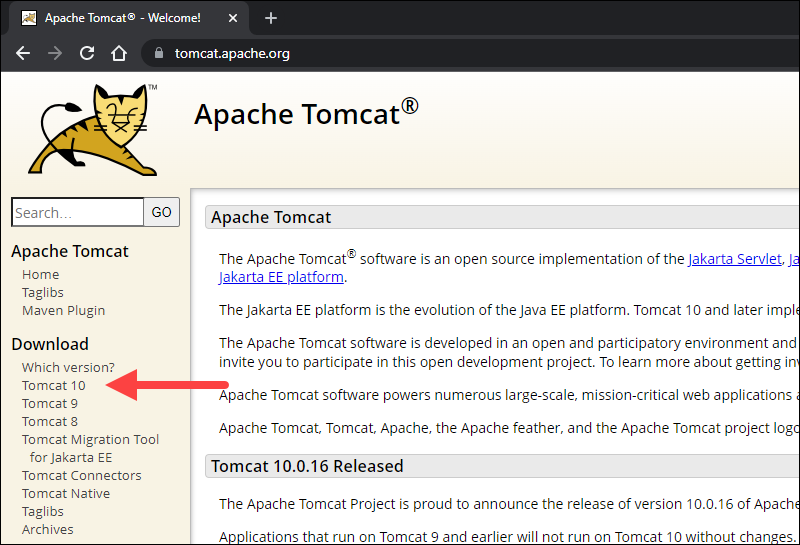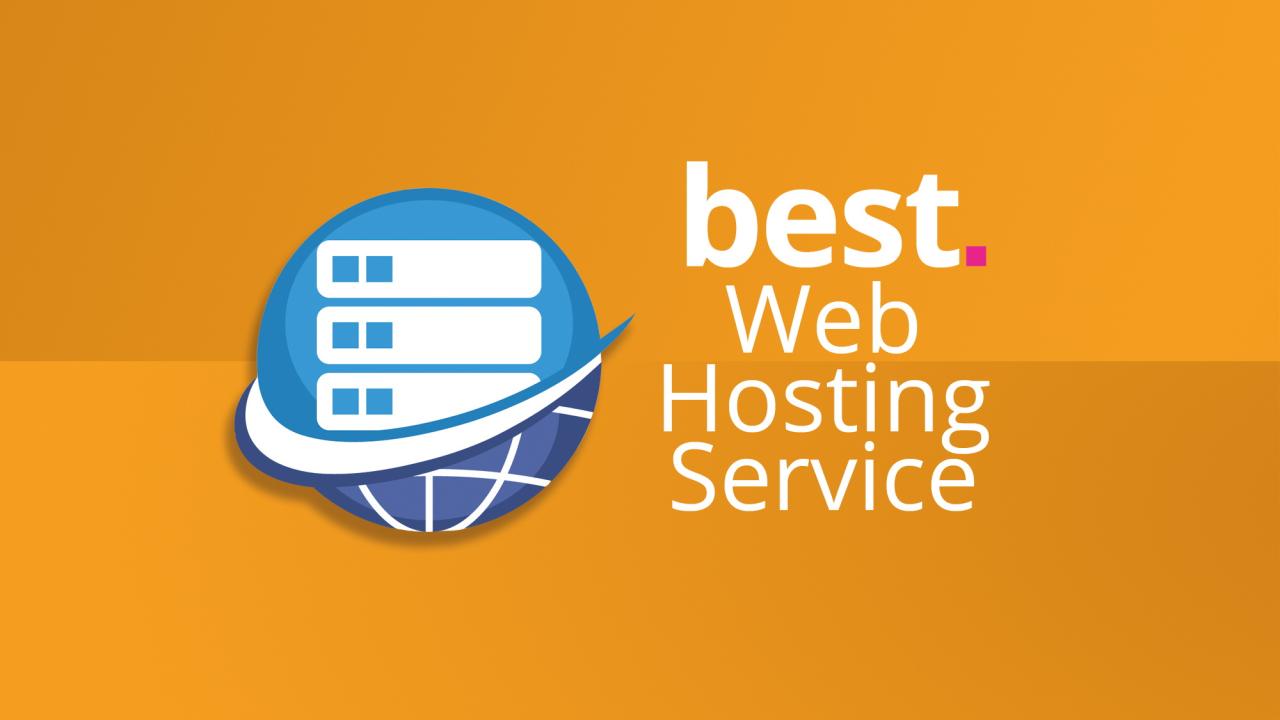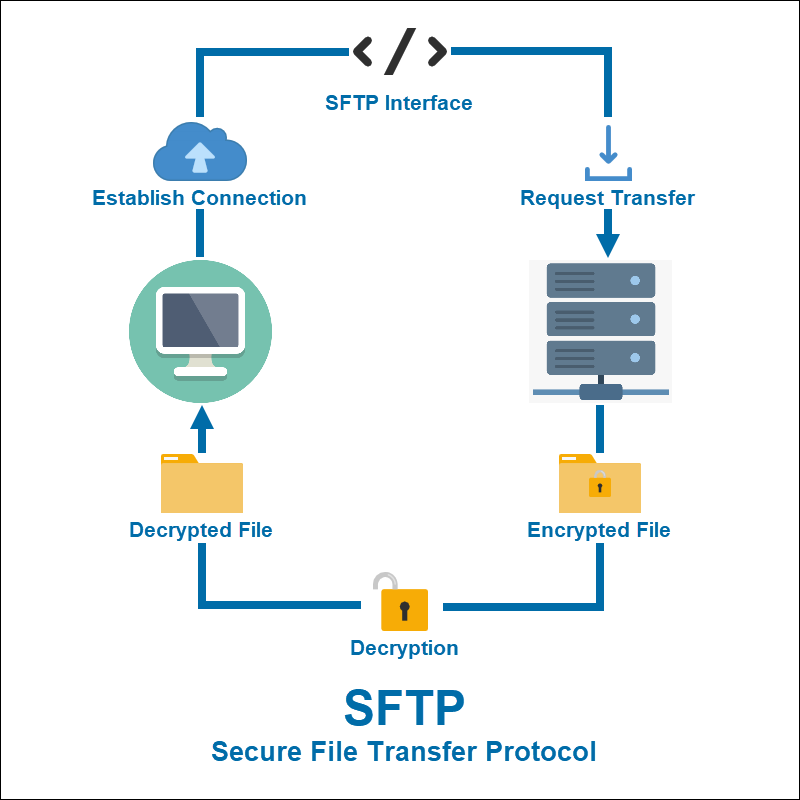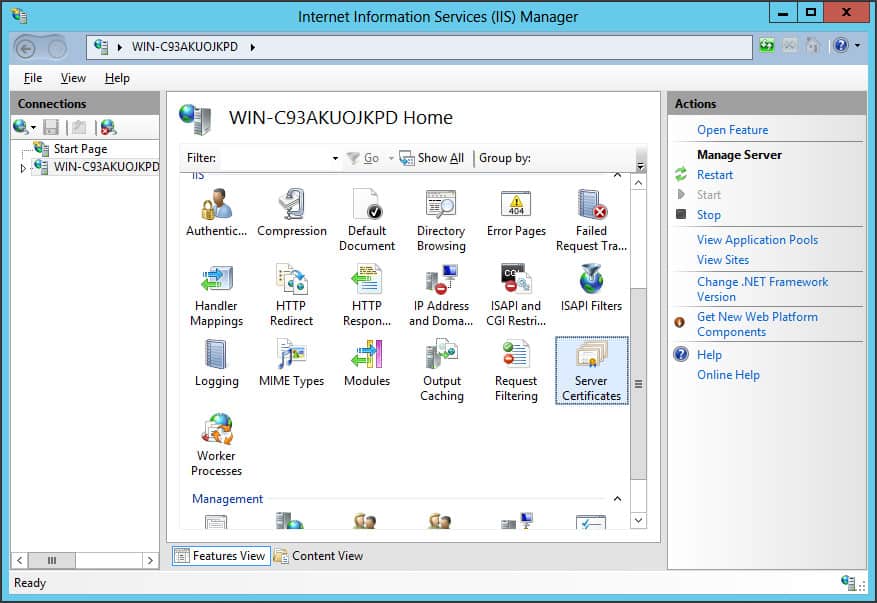Tomcat Download: Dive into the world of web application deployment with Apache Tomcat, a powerful and versatile Java servlet container. This guide will walk you through the process of downloading, installing, configuring, and deploying your applications on Tomcat, covering essential aspects from choosing the right version to securing your environment. Whether you’re a seasoned developer or just starting your journey, understanding Tomcat is key to building and deploying dynamic web applications.
Tomcat’s open-source nature and extensive community support make it a popular choice for developers. It’s used by countless websites and applications, powering everything from simple blogs to complex enterprise systems. From downloading the latest version to troubleshooting common issues, this guide will equip you with the knowledge to confidently deploy your web applications on Tomcat.
Tomcat Overview
Apache Tomcat is an open-source web server and servlet container that implements the Java Servlet, JavaServer Pages (JSP), Java Expression Language (EL), and WebSocket technologies. It is widely used for developing and deploying Java-based web applications.
Tomcat plays a crucial role in web application development by providing a runtime environment for Java servlets and JSPs. It acts as a bridge between web clients and web applications, handling HTTP requests and responses.
Key Features of Tomcat
Tomcat offers a wide range of features that make it a popular choice for web application development. These features include:
- Servlet and JSP Support: Tomcat provides a robust implementation of the Servlet and JSP specifications, enabling developers to build dynamic web applications using Java technologies.
- Web Server Functionality: Tomcat includes a built-in HTTP server, allowing it to directly serve static content such as HTML, CSS, and JavaScript files.
- Connection Pooling: Tomcat offers connection pooling to optimize database connections, reducing overhead and improving application performance.
- Security Features: Tomcat provides various security features, including authentication, authorization, and SSL/TLS support, to protect web applications from unauthorized access.
- Scalability and Performance: Tomcat is designed for scalability and performance, supporting multiple virtual hosts, thread pools, and connection management mechanisms.
- Extensibility: Tomcat’s modular architecture allows developers to extend its functionality through custom valves, listeners, and other components.
- Open Source and Community Support: As an open-source project, Tomcat benefits from a large and active community, providing extensive documentation, support, and contributions.
Tomcat Download Process
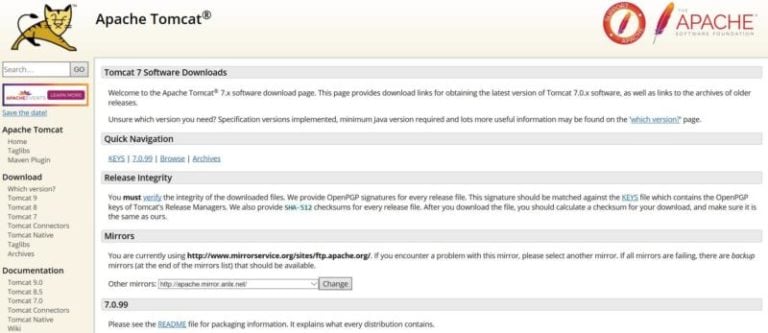
Downloading Tomcat is straightforward and can be accomplished by visiting the official Apache Tomcat website. This process involves navigating to the download section, selecting the desired version, and initiating the download.
Available Tomcat Versions
The Apache Tomcat website provides a comprehensive list of available versions, categorized by release type and supported Java versions. These versions cater to diverse requirements, offering flexibility for different projects and environments.
- Stable Releases: These are the most recent and thoroughly tested versions, suitable for production environments.
- Release Candidates: These versions are under development and may contain potential bugs or issues. They are suitable for testing and feedback before official release.
- Nightly Builds: These versions are compiled daily and provide the latest features and bug fixes. They are best for testing and experimenting with the latest developments.
Choosing the Right Tomcat Version
The choice of Tomcat version depends on several factors, including project requirements, Java compatibility, and desired features.
- Project Requirements: If the project necessitates specific features or functionality, the chosen version should support them.
- Java Compatibility: Tomcat versions are compatible with specific Java versions. Ensure the chosen version is compatible with the Java version used for the project.
- Desired Features: If the project requires specific features like security enhancements or performance optimizations, choose a version that offers them.
Tomcat Installation
Installing Tomcat is a straightforward process, involving downloading the appropriate distribution for your operating system and following a few simple steps. This section will guide you through the installation process for Windows, Linux, and macOS, providing instructions and highlighting key considerations.
Installation on Windows
The Tomcat installation process on Windows is relatively simple.
- Download the Tomcat binary distribution from the Apache Tomcat website.
- Extract the downloaded archive to your desired installation location. For instance, you could extract it to “C:\Tomcat”.
- Open the “bin” folder within the extracted directory and double-click the “startup.bat” file to start Tomcat.
- If you see the message “Server startup in [path]” in the command prompt, Tomcat is successfully running.
- To stop Tomcat, open the “bin” folder and double-click the “shutdown.bat” file.
Installation on Linux
Installing Tomcat on Linux involves using the command line.
- Download the Tomcat binary distribution from the Apache Tomcat website.
- Extract the downloaded archive to your desired installation location. For instance, you could extract it to “/opt/tomcat”.
- Open a terminal and navigate to the “bin” folder within the extracted directory.
- Run the command “./startup.sh” to start Tomcat.
- To stop Tomcat, run the command “./shutdown.sh”.
Installation on macOS
The installation process on macOS is similar to Linux, utilizing the command line.
- Download the Tomcat binary distribution from the Apache Tomcat website.
- Extract the downloaded archive to your desired installation location. For instance, you could extract it to “/usr/local/tomcat”.
- Open a terminal and navigate to the “bin” folder within the extracted directory.
- Run the command “./startup.sh” to start Tomcat.
- To stop Tomcat, run the command “./shutdown.sh”.
Configuring Tomcat
Once Tomcat is installed, you can configure its settings to customize its behavior. Configuration files are located in the “conf” directory within the Tomcat installation folder.
- server.xml: This file defines the overall Tomcat configuration, including ports, connectors, and virtual hosts. You can modify this file to change the default port for Tomcat, add new connectors for different protocols, or define virtual hosts for hosting multiple web applications.
- web.xml: This file defines the default settings for all web applications deployed on Tomcat. You can modify this file to change the default deployment settings, such as the default welcome page or the error page for 404 errors.
- context.xml: This file defines the settings for the Tomcat context, which is the environment in which a web application runs. You can modify this file to define data sources, security constraints, and other settings specific to a web application.
Environment Variables
Environment variables play a crucial role in Tomcat setup, providing information about the system and the environment where Tomcat is running.
- CATALINA_HOME: This variable points to the Tomcat installation directory. It is essential for Tomcat to find its configuration files and other resources.
- CATALINA_BASE: This variable specifies the base directory for Tomcat. By default, it is the same as CATALINA_HOME, but you can set it to a different directory if you want to have multiple Tomcat instances running on the same machine.
- JAVA_HOME: This variable points to the Java Development Kit (JDK) installation directory. Tomcat requires a JDK to run, and this variable tells Tomcat where to find it.
Tomcat Configuration
The Tomcat configuration is a crucial aspect of setting up and managing your web applications. It allows you to customize Tomcat’s behavior to suit your specific needs, from defining ports to managing security and logging.
Configuration Files
Tomcat’s configuration files are located within the `conf` directory in the Tomcat installation directory. These files contain various settings that determine how Tomcat operates. Here are some of the essential configuration files:
- server.xml: This is the primary configuration file for Tomcat. It defines the server’s structure, including connectors, services, and hosts. It also specifies the location of other configuration files.
- web.xml: This file defines the default settings for all web applications deployed on Tomcat. It includes settings for servlets, filters, listeners, and other components.
- context.xml: This file contains settings specific to individual web applications. It allows you to override default settings defined in `web.xml` and customize the behavior of your applications.
- tomcat-users.xml: This file defines user roles and permissions for accessing Tomcat’s administrative interface and other resources.
Key Settings
The configuration files contain numerous settings, but some of the key settings include:
- Port Numbers: Tomcat uses different ports for various services, including the HTTP connector (default: 8080), the AJP connector (default: 8009), and the shutdown port (default: 8005). You can modify these ports in the `server.xml` file to avoid conflicts with other applications or to use specific ports for security reasons.
- Logging: Tomcat’s logging configuration is defined in the `logging.properties` file. You can customize the logging level, output format, and destinations to monitor Tomcat’s activity and troubleshoot issues.
- Virtual Hosts: Virtual hosts allow you to host multiple web applications on the same Tomcat instance. You can configure virtual hosts in the `server.xml` file to map different domains or subdomains to specific web applications.
- Security: Tomcat provides various security features, such as SSL/TLS support, authentication, and authorization. You can configure these features in the `server.xml` file and the `tomcat-users.xml` file.
Common Configuration Changes
Here are some common configuration changes you might need to make for specific web application requirements:
- Changing the Default Port: If the default HTTP port (8080) is already in use, you can change it in the `server.xml` file by modifying the `port` attribute of the `Connector` element.
- Enabling SSL/TLS: To secure communication between the client and Tomcat, you can enable SSL/TLS in the `server.xml` file by adding a new `Connector` element with the `protocol` attribute set to `HTTPS`. You will also need to provide the SSL certificate and private key.
- Configuring Logging: You can customize the logging level, output format, and destinations in the `logging.properties` file. For example, you can increase the logging level to `DEBUG` to obtain more detailed information for troubleshooting.
- Adding Virtual Hosts: You can add virtual hosts in the `server.xml` file to host multiple web applications on the same Tomcat instance. This allows you to map different domains or subdomains to specific web applications.
- Configuring User Authentication: You can define user roles and permissions in the `tomcat-users.xml` file to control access to Tomcat’s administrative interface and other resources.
Tomcat Deployment
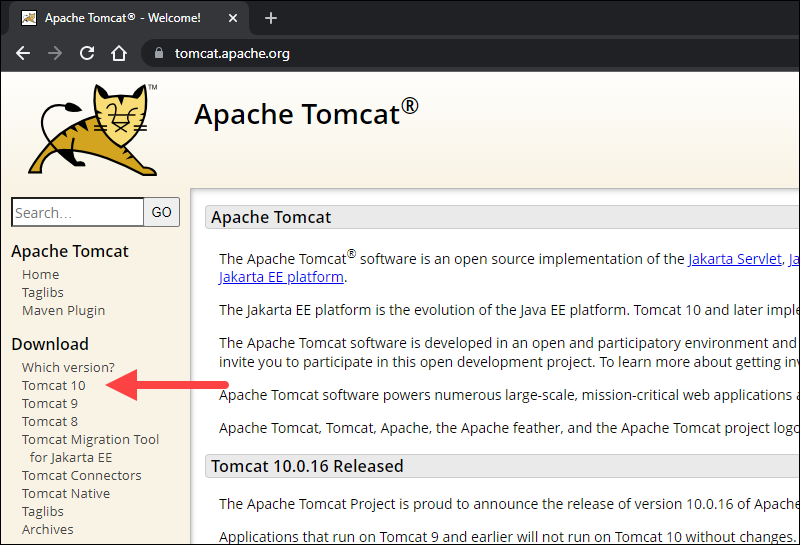
Deploying web applications to Tomcat is the process of making your applications accessible to users through the Tomcat server. This involves placing your application’s files in a specific location within Tomcat’s directory structure, allowing Tomcat to recognize and serve them.
Deployment Options
Tomcat provides various deployment options, each with its advantages and disadvantages. These options offer flexibility and control over how your web applications are deployed and managed.
- Manual Deployment: This involves manually copying your application’s files to Tomcat’s deployment directory. It’s a simple approach for small applications or during development, but can be tedious for larger projects or frequent updates.
- Automated Deployment: This utilizes tools and scripts to automate the deployment process, eliminating manual intervention. This approach is ideal for continuous integration and deployment (CI/CD) pipelines, ensuring seamless and consistent application updates.
- Remote Deployment: This allows you to deploy applications to a Tomcat server remotely, using tools like SSH or network protocols. This is beneficial for managing servers located in different locations or for automating deployment tasks.
Deploying WAR Files
WAR (Web Application Archive) files are standard packages for web applications. They contain all the necessary files, including HTML, CSS, JavaScript, Java classes, and configuration files.
- Locate the Deployment Directory: The default deployment directory for Tomcat is typically located at
/webappswithin the Tomcat installation directory. - Copy the WAR File: Place your WAR file in the
/webappsdirectory. Tomcat will automatically extract the contents of the WAR file and create a new directory with the same name as the WAR file. - Start or Restart Tomcat: If Tomcat is running, you’ll need to restart it for the deployment to take effect. This ensures that Tomcat recognizes the new application and loads its resources.
The WAR file is automatically extracted and deployed.
Deploying JAR Files
JAR (Java Archive) files contain Java classes and resources. While not directly deployable as web applications, they can be used within WAR files or as standalone libraries.
- Place JAR Files in the `lib` Directory: If you want to use a JAR file as a library within your WAR file, you can place it in the
/libdirectory of your web application. This directory is typically located within the extracted WAR file’s directory. - Add JAR Files to the Classpath: Alternatively, you can add the JAR file to Tomcat’s global classpath. This allows the JAR file to be accessible by all web applications deployed in Tomcat. However, be cautious about modifying the global classpath, as it might affect other applications.
JAR files provide additional functionality to your web application or act as shared libraries for multiple applications.
Tomcat Security
Tomcat, being a popular Java servlet container, requires careful security considerations to protect against unauthorized access and potential vulnerabilities. This section will delve into common security vulnerabilities and mitigation strategies, offering recommendations for securing your Tomcat installation.
Common Security Vulnerabilities and Mitigation Strategies
Understanding common security vulnerabilities is crucial for securing your Tomcat installation. These vulnerabilities can be exploited by malicious actors to gain unauthorized access, compromise data, or disrupt your application’s functionality.
- Cross-Site Scripting (XSS): XSS vulnerabilities occur when untrusted data is injected into a web application without proper sanitization. This allows attackers to execute malicious scripts in the context of the victim’s browser, potentially stealing sensitive information or manipulating user actions.
- Mitigation: Implementing robust input validation and output encoding mechanisms can effectively prevent XSS attacks. Sanitize all user input by removing or escaping potentially harmful characters before displaying it on the web page. Additionally, utilize a web application firewall (WAF) to filter malicious requests and prevent XSS attacks from reaching your application.
- SQL Injection: SQL injection vulnerabilities arise when user input is directly incorporated into SQL queries without proper validation or escaping. This enables attackers to manipulate queries, potentially gaining unauthorized access to sensitive data or modifying database records.
- Mitigation: Employ parameterized queries or prepared statements to prevent SQL injection attacks. These techniques separate user input from the SQL query, ensuring that the database interprets input as data rather than code. Additionally, utilize a database access layer that automatically handles escaping and sanitization, reducing the risk of manual errors.
- Directory Traversal: Directory traversal vulnerabilities allow attackers to access files and directories outside the intended scope of the application. This can lead to unauthorized access to sensitive files or even the execution of malicious code.
- Mitigation: Implement strict file path validation to ensure that all file access requests are within the designated application directory. Avoid using user input directly when constructing file paths, and sanitize all file paths before accessing them. Configure Tomcat to prevent access to specific directories and files by setting appropriate security policies.
- Remote Code Execution (RCE): RCE vulnerabilities enable attackers to execute arbitrary code on the server, potentially gaining complete control over the system. These vulnerabilities often arise from insecure configurations or outdated software.
- Mitigation: Regularly update Tomcat and all dependent libraries to the latest versions to patch known security vulnerabilities. Implement strong authentication and authorization mechanisms to restrict access to sensitive resources and administrative functions. Securely configure Tomcat by disabling unnecessary features and services. Consider using a web application firewall (WAF) to protect against RCE attacks.
Recommendations for Securing Tomcat
- Use Strong Passwords and Authentication: Employ strong passwords for all administrative accounts and configure secure authentication mechanisms. Consider using two-factor authentication for enhanced security. Implement access control lists (ACLs) to restrict access to specific resources based on user roles and permissions.
- Secure Configuration: Configure Tomcat securely by disabling unnecessary features and services. Remove default sample applications that are not required. Disable directory listing to prevent attackers from enumerating files and directories on your server. Configure Tomcat to use HTTPS for all communication to ensure secure data transmission.
- Regular Updates and Patches: Regularly update Tomcat and all dependent libraries to the latest versions to patch known security vulnerabilities. Implement a robust patch management process to ensure that all updates are applied promptly. Monitor for security advisories and promptly address any critical vulnerabilities.
- Web Application Firewall (WAF): Consider deploying a web application firewall (WAF) to protect against common web attacks, including XSS, SQL injection, and RCE. WAFs can filter malicious requests and prevent them from reaching your application. They can also help enforce security policies and detect suspicious activity.
- Secure Development Practices: Implement secure development practices throughout the application lifecycle. This includes using secure coding standards, conducting code reviews, and performing security testing. Employ a secure development framework that enforces security best practices and reduces the risk of vulnerabilities.
- Monitoring and Logging: Implement robust monitoring and logging to detect suspicious activity and identify potential security breaches. Configure Tomcat to log all access attempts and errors. Regularly review logs for anomalies and investigate any suspicious events.
Tomcat Troubleshooting
Tomcat, like any other software, can encounter issues that require troubleshooting. This section provides a guide to common Tomcat errors, their potential causes, and troubleshooting steps to help you resolve them.
Common Tomcat Errors and Causes
Understanding common Tomcat errors and their causes is crucial for effective troubleshooting. The following table lists some frequent errors and their potential origins:
| Error Message | Possible Cause |
|---|---|
| 404 Not Found | Incorrect URL, missing or incorrectly configured web application, or file not found in the specified location. |
| 500 Internal Server Error | General server-side error, such as code errors, database connection issues, or configuration problems. |
| 403 Forbidden | Insufficient permissions to access the requested resource, incorrect authentication, or web application configuration restricting access. |
| Connection refused | Tomcat server is not running or listening on the specified port. |
| Out of memory | Tomcat is consuming more memory than available, possibly due to a memory leak or excessive resource usage by the web application. |
Troubleshooting Steps
The following troubleshooting steps can help you resolve common Tomcat issues:
- Check the Tomcat logs: Tomcat logs provide valuable insights into the server’s state and any errors encountered. Examine the logs for error messages, stack traces, and other relevant information.
- Verify the server is running: Ensure Tomcat is running and listening on the expected port. Use the
pscommand (Unix/Linux) ortasklist(Windows) to check if the Tomcat process is active. - Review the web application configuration: Check the web application’s deployment descriptor (
web.xml) for any errors or misconfigurations. Ensure the application’s dependencies and libraries are properly included. - Inspect the server configuration: Review the Tomcat server configuration files (
server.xml,context.xml) for any issues or inconsistencies. Verify that the configuration matches the application’s requirements. - Check for memory leaks: If you suspect a memory leak, use profiling tools to monitor the application’s memory usage and identify potential sources of leaks.
- Examine the database connection: If the error involves database access, verify the database connection details (host, port, username, password) and ensure the database is accessible.
- Restart Tomcat: Sometimes, a simple restart of Tomcat can resolve temporary issues. This clears the server’s cache and restarts the processes.
Tomcat Logs for Debugging
Tomcat logs play a vital role in debugging and troubleshooting. They record various events, including server startup and shutdown, requests processed, errors encountered, and warnings.
- Log files: Tomcat logs are stored in the
logsdirectory within the Tomcat installation directory. Key log files include:
| Log File | Description |
|---|---|
catalina.out |
General server logs, including startup and shutdown messages, errors, and warnings. |
localhost.YYYY-MM-DD.log |
Logs specific to the localhost context, containing requests, responses, and errors related to applications deployed on localhost. |
manager.YYYY-MM-DD.log |
Logs related to the Tomcat Manager application, which provides administrative functionality. |
- Log levels: Tomcat allows you to configure the logging level for different components. Common log levels include:
| Log Level | Description |
|---|---|
INFO |
Logs informational messages, such as server startup and shutdown events. |
WARN |
Logs warnings, indicating potential issues or unexpected behavior. |
ERROR |
Logs errors, indicating critical problems that may prevent the application from functioning correctly. |
DEBUG |
Logs detailed debugging information, useful for pinpointing the root cause of errors. |
- Analyzing logs: When troubleshooting, examine the Tomcat logs for error messages, stack traces, and other relevant information. Look for patterns or recurring errors. Use the log level to filter the output and focus on the most relevant information.
Tomcat Performance Tuning
Optimizing Tomcat’s performance is crucial for applications demanding high throughput and low latency. This section explores key performance metrics and techniques for enhancing Tomcat’s efficiency.
Key Performance Metrics
Understanding key performance metrics helps in identifying areas for improvement. These metrics provide insights into Tomcat’s resource utilization and overall performance.
- Throughput: This metric measures the number of requests Tomcat can process per unit of time. A higher throughput indicates better performance.
- Latency: Latency measures the time taken to process a single request. Lower latency translates to faster response times and a better user experience.
- CPU Utilization: This metric indicates the percentage of CPU time Tomcat is consuming. High CPU utilization can point to bottlenecks and potential performance issues.
- Memory Usage: Monitoring memory usage helps identify memory leaks and ensure Tomcat has enough memory to operate efficiently.
- Thread Pool Size: Tomcat uses a thread pool to handle requests. Optimizing the thread pool size is crucial for balancing performance and resource utilization.
Techniques for Optimizing Tomcat Performance
Several techniques can significantly enhance Tomcat’s performance. These techniques aim to reduce resource consumption, improve request processing, and enhance overall efficiency.
- Connection Pooling: Using a connection pool reduces the overhead of establishing and closing database connections for each request.
- Caching: Caching frequently accessed data reduces the need for repeated database queries, improving response times.
- Asynchronous Processing: Using asynchronous processing allows Tomcat to handle multiple requests concurrently, improving throughput.
- Load Balancing: Distributing requests across multiple Tomcat instances reduces the load on a single server, enhancing scalability and reliability.
- JVM Tuning: Optimizing JVM settings, such as heap size and garbage collection parameters, can significantly impact Tomcat’s performance.
Impact of Configuration Settings
Tomcat’s configuration settings play a crucial role in its performance. Understanding the impact of these settings allows for fine-tuning Tomcat to meet specific performance requirements.
- Connector Settings: Configuration options like the number of threads, the size of the request queue, and the timeout settings can influence Tomcat’s ability to handle requests efficiently.
- Executor Settings: The executor configuration defines the thread pool size and other parameters related to thread management.
- Caching Settings: Configuring caching mechanisms, such as session caching and page caching, can significantly improve response times.
- Logging Settings: Excessive logging can impact performance. Optimizing logging levels and configurations can reduce the overhead associated with logging.
Tomcat Alternatives: Tomcat Download
While Tomcat is a widely used and reliable Java servlet container, there are other options available for deploying web applications. Choosing the right alternative depends on your specific needs and priorities. Here’s a comparison of popular Tomcat alternatives, considering features, performance, and security aspects.
Popular Tomcat Alternatives
This section presents popular alternatives to Tomcat, highlighting their key features and suitability for different use cases.
- Jetty: Jetty is a lightweight and highly customizable servlet container known for its fast startup times and efficient resource utilization. It’s particularly suitable for microservices and embedded applications. Jetty offers a wide range of features, including support for HTTP/2, WebSocket, and asynchronous I/O.
- Undertow: Undertow is a high-performance, non-blocking web server and servlet container developed by Red Hat. It excels in handling a large number of concurrent connections, making it ideal for demanding web applications. Undertow is known for its low memory footprint and efficient resource management.
- GlassFish: GlassFish is a full-fledged Java EE application server developed by Oracle. It provides a comprehensive set of features, including support for JavaServer Pages (JSP), servlets, Enterprise JavaBeans (EJB), and Java Message Service (JMS). GlassFish is a robust choice for enterprise-grade applications that require a wide range of functionalities.
- JBoss EAP: JBoss Enterprise Application Platform (EAP) is a commercial Java EE application server developed by Red Hat. It offers a comprehensive set of features, including support for JavaServer Faces (JSF), Web Services, and security management. JBoss EAP is well-suited for enterprise-grade applications that require robust features and support.
- WebSphere Application Server: WebSphere Application Server is a commercial Java EE application server developed by IBM. It provides a comprehensive set of features, including support for JavaServer Pages (JSP), servlets, Enterprise JavaBeans (EJB), and Java Message Service (JMS). WebSphere Application Server is a robust choice for enterprise-grade applications that require a wide range of functionalities and support.
Comparison of Tomcat and its Alternatives
This section compares Tomcat with its alternatives, considering features, performance, and security aspects.
| Feature | Tomcat | Jetty | Undertow | GlassFish | JBoss EAP | WebSphere Application Server |
|---|---|---|---|---|---|---|
| Lightweight and Fast Startup | Moderate | High | High | Moderate | Moderate | Moderate |
| Scalability and Performance | Good | Excellent | Excellent | Good | Excellent | Excellent |
| Feature Set | Core Java EE | Wide range of features | High performance | Full Java EE | Comprehensive Java EE | Comprehensive Java EE |
| Security | Good | Good | Good | Excellent | Excellent | Excellent |
| Cost | Open Source | Open Source | Open Source | Open Source | Commercial | Commercial |
| Support | Active community | Active community | Active community | Oracle Support | Red Hat Support | IBM Support |
Suitability for Specific Use Cases, Tomcat download
This section discusses the suitability of each alternative for specific use cases, considering their strengths and weaknesses.
- Microservices and Embedded Applications: Jetty’s lightweight nature and fast startup times make it an excellent choice for microservices and embedded applications. Its ability to run within a larger application makes it ideal for scenarios where resource utilization is critical.
- High-Performance Web Applications: Undertow’s non-blocking architecture and efficient resource management make it an excellent choice for high-performance web applications that handle a large number of concurrent connections. Its low memory footprint is an advantage for applications with resource constraints.
- Enterprise-Grade Applications: GlassFish, JBoss EAP, and WebSphere Application Server are robust choices for enterprise-grade applications that require a comprehensive set of features, including support for JavaServer Pages (JSP), servlets, Enterprise JavaBeans (EJB), and Java Message Service (JMS). They offer strong security features and extensive support for enterprise-level deployments.
- Cost-Effective Solutions: Tomcat, Jetty, and Undertow are open-source solutions, making them cost-effective options for projects with limited budgets. They offer a balance of features and performance, making them suitable for a wide range of use cases.
Ending Remarks
By mastering the intricacies of Tomcat Download, you’ll unlock the potential to build and deploy robust web applications. Whether you’re using Tomcat for personal projects or large-scale enterprise deployments, the knowledge gained from this guide will serve you well. From understanding the fundamentals to navigating advanced configurations, you’ll be well-equipped to leverage the power of Tomcat for your web development endeavors.

